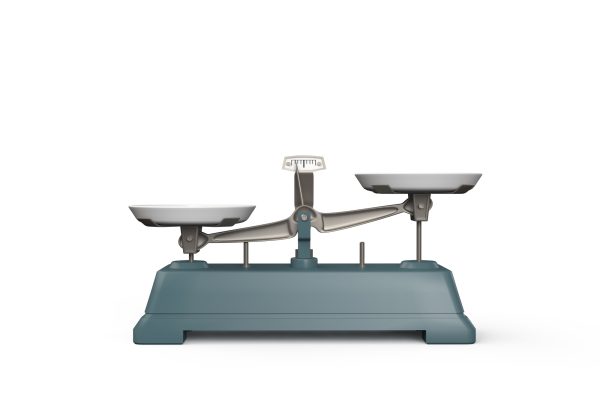Are You Chasing Yield in Fixed Income?
Interest rates and risk premiums (credit spreads) are both very low. This has caused some investors to chase yield via more aggressive fixed income opportunities without appreciating the incremental risk associated with those decisions. To increase yield, investors must increase interest rate exposure (duration) and/or increase the amount of credit risk they are taking. The fact that risk spreads are so low is evidence that many investors have taken on additional risk in their search for yield. This also means that investors are not being compensated for the risk they are taking. We would strongly advise more conservative fixed investors, who highly value preservation of capital, to stay the course or only consider increasing risk in moderation. However, we are confident many non-ACM investors could likely benefit from some adjustments to their current fixed income portfolios.
The topics of inflation and low interest rates are currently dominating both equity and fixed income market conversations. Even Fed Chair, Jerome Powell, acknowledges that everyone is trying to parse transitory from systemic inflation. As he discussed at the Fed press conference last week, experience provides a poor guide to predicting future growth and inflation dynamics. The shutdown and its recent reversal are simply unprecedented. Consequently, both the Fed and investors are watching the data carefully. Powell signaled that the Fed would tolerate higher inflation in the near-term provided employment continues to improve. However, Powell acknowledged the risk that inflation could exceed the Fed’s objectives. The Fed reflected the stronger economic and inflation outlook in its projections of policy rate hikes becoming more likely in as early as late 2022. So far, investors appear confident that while near-term inflation will be higher, the Fed will be able to achieve its 2% longer term, average target.
With rates remaining so low, many investors are considering high yield bonds. While high yield bonds are typically a step change greater in risk than investment grade bonds, they can offer investors who do their homework a good opportunity to get paid a bit more. The problem with moving to all high yield right now is that most investors do not realize that high yield spreads are near all-time lows at the same time interest rates are so low. Normally, high yield bonds are generally much more driven by risk premiums than interest rates, so investors should be cautious. And record low interest rates create another potential headwind because even high yield bonds will trade lower if rates rise (especially when spreads are tight). While there are select compelling high yield opportunities, investors need to realize the importance of keeping portfolios short-dated and higher quality. Short-dated bonds have less exposure to both credit risk and rates, so they protect capital when interest rates increase. If you are not paid adequately to take additional risk, you should not.
The graph below shows High yield spreads in the U.S. for the past 10 years. Spreads are near the lows!

Likewise yield seeking investors may also consider preferreds, but these suffer from precisely the same problem afflicting bonds; they also have low yields and low risk spreads. The coupon rate on the preferred is extremely important. Low fixed coupons imply large losses in value when interest rates or risk premiums increase. On the other hand, there are many preferreds that become floating rate in the future, and therefore limit the amount of interest rate exposure to typically only a 5 or 10-year period. But while these securities do have less rate exposure, they have substantial credit risk exposure. So, understanding the quality of the credit and making sure that the floating spread will remain attractive in most market environments is crucial. Many recent preferreds have been issued with a low fixed rate coupon or a low floating rate spread, which is fine only if interest rates remain low. Many investors simply do not realize that if they buy a 4% fixed coupon preferred, and long-term rates rise 1%, the preferred will lose nearly 20% of its value. Therefore, the penalty for buying the wrong preferred can be permanent and painful.
So what are fixed income investors to do? Well first, investors must understand that rising interest rates do not necessarily mean your fixed income portfolio will lose money over a one-year period. Even if rates rise, the magnitude and timing of rate increases determine how large of a potential headwind rising rates are. For example, a 0.25% rate increase per year in a solid macro environment will likely still provide solid fixed income returns as the interest rate headwind is minimal in context of the yield earned. Importantly, and we simply cannot stress this point enough, not all investment grade is created equal. At ACM we currently focus on the lower end of investment grade (BBB/BBB-), because these credits typically provide incremental yield for what we deem as marginally more risk. Additionally, investment grade fixed income portfolios can be constructed with bonds with less interest rate sensitivity than very long-dated bonds that are extremely interest rate sensitive.
Fixed income is clearly not easy right now, but our advice is to be defensive, rather than overly aggressive. That does not mean just do nothing. If you do not want to increase risk, then you should simply ensure that you or your investment firm is creative and clever because plain vanilla investment grade is unlikely to be sufficient in the current environment. (Note the average investment grade bond is down over 1.5% while the average ACM fixed portfolio is positive for the year.)
If you are considering getting more aggressive with your fixed income, we simply suggest that you have a conversation with your financial advisor before significantly increasing the risk in your fixed income portfolio. For example, at ACM we offer a Fixed Plus which typically allocates about a quarter of a fixed portfolio to non-investment grade securities. This smaller percentage allows us to be very picky and carefully choose a limited number of high yield securities that we find quite attractive. This is extremely different than having to construct a high yield portfolio of 25 individual securities that we find attractive in the current environment.
Regardless of your risk tolerance, even in a low yield environment, a fixed income portfolio consisting of individually selected securities can deliver value. If you think we can help you better understand your potential fixed income options, please do not hesitate to contact us.




LATEST ARTICLES